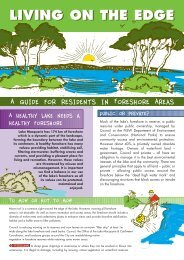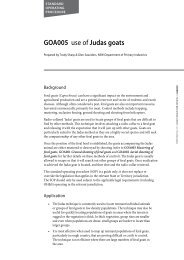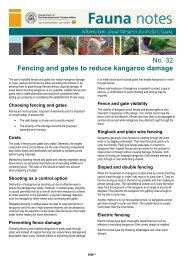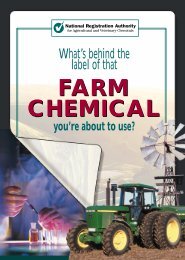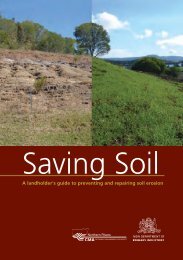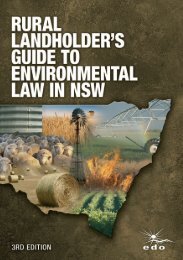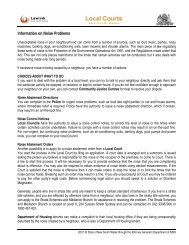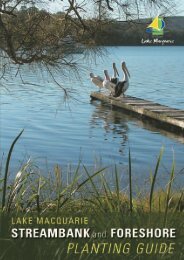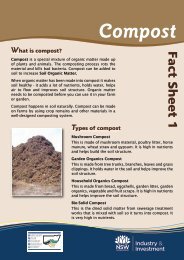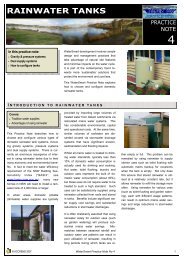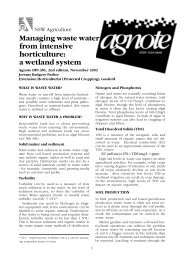Agricultural Fire Management Guidelines - Guide to Rural ...
Agricultural Fire Management Guidelines - Guide to Rural ...
Agricultural Fire Management Guidelines - Guide to Rural ...
Create successful ePaper yourself
Turn your PDF publications into a flip-book with our unique Google optimized e-Paper software.
Section 2 BackgroundProtecting the environmentTo help secure the long-term sustainability of a property, allfi re management planning needs <strong>to</strong> include consideration offi re safety, legal requirements, economic and environmentalissues.Protecting and improving the environment is an importantpart of sound fi re management planning (see Environmentalprotection, page 36). This is increasingly being recognisedin the management of rural land. For example, fi remanagement is often part of agricultural quality assurancesystems.Looking after the environment when undertaking fi remanagement includes:• identifying environmental assets (air, water, land andvegetation) and how they might be affected by fi re andfi re management activities;• avoiding environmental harm;• minimising harm where it cannot be avoided;• repairing environmental harm if it occurs; and• considering the use of fi re <strong>to</strong> improve the health of nativevegetation (ecological burning).Care needs <strong>to</strong> be taken <strong>to</strong> ensure that fi re managementdoes not cause unintended consequences such as a lossof vegetation, wildlife and scenic quality, weed invasion,erosion and water quality problems.As part of helping <strong>to</strong> protect the environment, permits areoften required <strong>to</strong> remove native vegetation. There are someexemptions for fi re safety. More information about thesepermits and exemptions is available at local councils.Sometimes fi re management can have both fi re safety andenvironmental benefi ts. The wick wiper machine picturedbelow is used <strong>to</strong> apply herbicide <strong>to</strong> taller introduced grasses(such as phalaris) leaving shorter native grasses (such askangaroo grass) that have a lower fuel load.Figure 11: A wick wiper used <strong>to</strong> wipe herbicide on tallgrasses for environmental and fire safety benefits14 On the Land: <strong>Agricultural</strong> <strong>Fire</strong> <strong>Management</strong> <strong><strong>Guide</strong>lines</strong>




